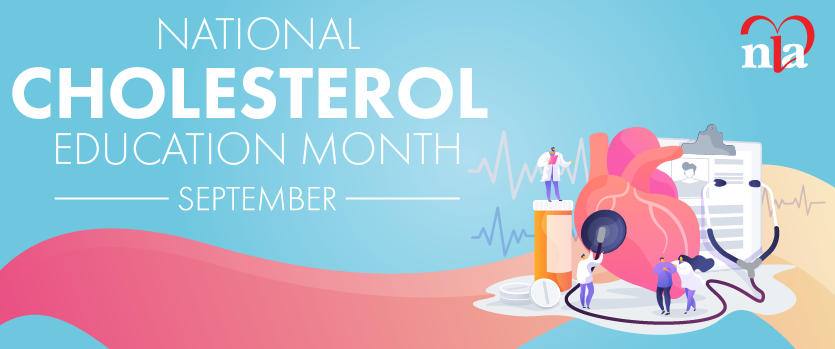Introduction
Human population studies have identified a number of major risk factors for the development of atherosclerotic cardiovascular disease (ASCVD). Of these, age is one of the more powerful. Another is the plasma concentration of low-density lipoprotein cholesterol (LDL-C). There is compelling and consistent evidence from clinical outcome trials that reducing the level of LDL-C with statins reduces the risk of having an ASCVD event. However, since most of the population studies and intervention trials have involved middleaged rather than elderly people, the question arises: How does LDL-C impact ASCVD in the elderly?
In contrast to the robust and consistent positive relationship between LDL-C concentration and ASCVD in middleaged people, the relationship of LDL-C to ASCVD risk in older people is weaker1 and, in some studies, non-existent. While it is likely that the relationship between LDL-C and ASCVD in the elderly is weakened by the impact of age as a risk factor, the inconsistencies have raised a degree of doubt regarding the importance of targeting LDL-C in the elderly.
However, in contrast to inconsistent results involving elderly people in observational population studies, there is a substantial, consistent and robust body of evidence from randomized clinical outcome trials that reducing LDL-C levels by treatment with statins reduces the relative risk of having an ASCVD event in the elderly to an extent comparable to that observed in middle-aged people. Given that the risk of having an ASCVD event is much higher in the elderly than in middle age, a relative risk reduction in the elderly that is comparable to that in middle age indicates that the absolute reduction in risk in the elderly is considerably greater than in middle age.
Effects of Statins in the Elderly in Secondary Prevention Trials
In the Scandinavian Simvastatin Survival Study (4S), treatment with simvastatin reduced the concentration of LDL-C by 35 percent and reduced the risk of death by 30 percent in the total study population.
In the 1,021 participants ages 65 to 70, treatment with simvastatin reduced both all-cause mortality and major coronary heart disease (CHD) events by 34 percent, similar to the results observed in the younger patients.3 Since the mortality rate in the older people in the placebo group was 19.1 percent, compared with 9.3 percent in the younger subgroup, similar relative reductions in mortality in the older and younger groups translated to a greater absolute reduction in mortality in the older subgroup than in the younger subgroup (6.2 vs 2.5 percent).
A greater absolute benefit of statin treatment in the elderly also was seen in the Cholesterol and Recurrent Events (CARE) trial, in which treatment with pravastatin resulted in a 24 percent reduction in the primary endpoint of fatal CHD event or nonfatal myocardial infarction (MI).4 In the 1,283 participants ages 65 to 75 in this study, treatment with pravastatin reduced major CHD events by 32 percent, CHD death by 45 percent, and stroke by 40 percent.5 Again, since the risk of events in the placebo group was much greater in the older participants, these relative risk reductions translate into a much greater absolute risk reduction in the older participants compared with the younger participants. Similar results of the effects of pravastatin were found in the Long-term Intervention with Pravastatin in Ischemic Disease (LIPID) study.6 In the Heart Protection Study (HPS), treatment with simvastatin in those ages 70 to 80 had an absolute 5.1 percent reduction in major ASCVD events.7 The Prospective Study of Pravastatin in the Elderly at Risk (PROSPER) was conducted in 5,804 men and women ages 70 to 82 with a history of CHD or risk factors for CVD. Participants were randomized to pravastatin or placebo.8 Treatment with pravastatin resulted in a 15 percent relative reduction in the primary endpoint of CHD death, non-fatal MI, and fatal or non-fatal stroke.
The Pravastatin or Atorvastatin Evaluation and Infection Therapy (PROVE-IT) study compared 80 mg of atorvastatin with 40 mg of pravastatin in an acute coronary syndrome (ACS) population. Treatment with 80 mg atorvastatin compared with 40 mg pravastatin resulted in a reduction in the primary endpoint of death (MI, unstable angina, revascularization and stroke) from 26.3 to 22.4 percent, an absolute reduction of 3.9 percent (p = 0.005).9 In the 634 patients over the age 70 in this study, atorvastatin therapy was associated with a relative 40 percent reduction in CHD events, considerably greater than the observed 26 percent reduction in patients under the age of 70.
In the Myocardial Ischemia Reduction with Aggressive Cholesterol Lowering (MIRACL) trial, high-dose atorvastatin was compared with placebo in patients with acute coronary syndromes.11 In the total population of 3,086 patients, atorvastatin reduced the primary endpoint of nonfatal MI, cardiac arrest or ACS by 16 percent (p < 0.05). In the 1,672 patients age 65 or above, there was a similar 14 percent reduction in the primary endpoint. There also was a 34 percent significant endpoint reduction in those ages 80 or above.
The Treating to New Targets (TNT) trial randomized 10,001 patients with stable CHD to atorvastatin 10 mg daily or 80 mg daily.13 In the total population, treatment with the higher dose of atorvastatin resulted in a relative 22 percent reduction of the primary endpoint of CHD death, nonfatal MI, cardiac arrest, or fatal/nonfatal stroke. In the 3,809 patients ages 65 or older, the absolute risk reduction in the primary endpoint was 2.3 percent, similar to that observed in patients younger than 65.
Effects of Statins in the Elderly in Primary Prevention Trials
As in the secondary prevention trials, the evidence again strongly supports the use of statin therapy in the elderly. The Air Force/ Texas Coronary Atherosclerosis Prevention Study (AFCAPS/TexCAPS)15 compared lovastatin to placebo. Of the 6,005 participants, 22 percent were older than 65. Treatment with lovastatin decreased ASCVD events by 37 percent in the total population and by 30 percent in the elderly subgroup. In the Anglo-Scandinavian Cardiac Outcomes Trial – Lipid Lowering Arm (ASCOT-LLA) there was a significant benefit with atorvastatin therapy on CHD events in patients ages 40 to 79 who were free of evidence of ASCVD at the time of randomization.16 In the 6,570 patients over
the age of 60 in this study, the relative risk reduction in CHD events was similar to that in patients under the age of 60 (34 vs. 36 percent, respectively). Similar results were found in the Collaborative Atorvastatin Diabetes Study (CARDS).17 In the 1,129 participants ages 65 to 75 in this trial, treatment with atorvastatin 10 mg daily resulted in a 38 percent relative reduction in the risk of having a CHD event. The Justification for the Use of Statins in Prevention: an Intervention Trial Evaluating Rosuvastatin (JUPITER) was a trial in which all participants were free of CHD at baseline. In the 5,695 participants ages 70 or above, treatment with rosuvastatin resulted in a significant 39 percent relative reduction in the risk of having a major ASCVD event.
Meta-Analyses
The benefits of statin therapy in elderly patients with CHD have been summarized in several meta-analyses. Afilalo, et al., analyzed nine trials including 19,569 patients ages 65 to 82 with CHD and found a relative reduction of 22 percent in all-cause mortality and 30 percent in CHD death associated with statin therapy.19 In a larger, patient-level meta-analysis from the Cholesterol Treatment Trialists’ (CTT) Collaboration of 26 randomized clinical trials with more than 170,000 participants, statin therapy was found to reduce the risk of major CHD events by about 20 percent per 1 mmol/L (39 mg/dL) reduction in LDL-C.20 The relative risk reduction in participants ages 65 to 74 and 75 or older was similar to that in the younger age groups.20 In another meta-analysis, pooled data from eight trials of statin therapy used in older individuals (>65 years) revealed a significant 39 percent relative reduction in the risk of MI and a 24 percent relative reduction in the risk of stroke in those treated with a statin.
So, the question arises: In the absence of a contraindication for their use, should all people older than 65 be treated with statins?
• Fact: Given that age is a powerful, independent risk factor for the development of ASCVD, the absolute risk of having a clinical ASCVD event is higher in the elderly than in younger people.
• Fact: Given that the relative reduction in ASCVD risk resulting from statin therapy is similar in older and younger people, it follows that the absolute risk reduction resulting from statin therapy is greater in the elderly than in younger people.
• Fact: Adverse effects of statins are greatly outweighed by their benefits.
• Fact: The cost of statins is now very low.
Given these facts, it is difficult to argue against the proposition that, unless contraindicated, all people older than 65 should receive a statin, regardless of the presence or absence of risk factors other than older age. Such action has the potential to substantially reduce morbidity in the elderly.
Disclosure statement: Dr. Barter has received honorarium as a speaker and/or member of the advisory board for Amgen, Lilly, Merck, Pfizer, and Sanofi-Regeneron.






.jpg)
.png)











